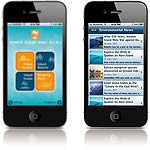Beijing has announced that work on its man-made islands in the South China Sea is almost finished, heightening tensions with neighbouring countries and posing a serious threat to the environment.
- Beijing has announce that it has moved another step closer to completing its controversial artificial island project in the disputed Spratly Islands
- The project – viewed by many as an attempt to assert Chinese power in the region – has put increased pressure on China’s already strained relationship with its neighbours
- Yet as the world’s leaders focus on the diplomatic consequences, scientists warn there is an even greater problem at stake than the threats to local peace-keeping efforts
Call for Cool Heads in Chinese Diplomacy Threat
China has announced that its bold plans to create a series of artificial islands in the Spratly Islands are moving closer to completion, putting increased pressure its already strained relationship with the likes of Taiwan, Vietnam, the Philippines and Malaysia – all of whom lay claim to the disputed territory in the South China Sea.
The decision to create the islands has been viewed as a considerable statement of intent from China. And with rumours circulating that Beijing reportedly intends to use the islands as a military bases, the international community has been quick to denounce the controversial land reclamation efforts, urging all parties to “seek restraint and de-escalate the situation.”
Not Just International Relations at Risk
Yet the threat to regional peace-building efforts is not the only thing at risk. Indeed, whilst the world’s politicians concentrate on the diplomatic consequences of the construction, marine experts are becoming increasingly worried about the negative effects on the environment – in particularly the damage being done to the region’s diverse marine life and delicate coral reefs.
John McManus, a biologist from the University of Miami, warns that the damage to coral could be catastrophic. “Sand from dredging is also spreading beyond the construction sites, covering nearby coral reefs and killing them,” he explained. “Because coral is such a slow-growing organism, the long-term effects of China’s massive island-building will take decades to reverse.”
“This is the worst thing that has happened to coral reefs in our lifetime,” McManus continued. “We’ve already witnessed massive degradation.”
Local Ecology “Destroyed” by Island Development
So dramatic is the decline in the amount of coral in the region, that the consequences are already being felt elsewhere. A number of Asian nations rely on the abundance of marine life within waters surrounding the Spratly Islands as an important source of sustenance. Yet here too, marine biodiversity is undergoing a dramatic decline.
Greg Mitchell, a professor of Marine Ecology at the Scripps Institution of Oceanography in California, explained that the heavy dredging involved in constructing China’s man-made islands is destroying what’s left of the local ecology. “The islands would have been very diverse if only they had been left alone,” Mitchell said. “My guess is the biodiversity has been altered already. They are burying the ecosystem and destroying it.”
Read more:
- Tensions Mount in South China Sea As China Develops Artificial Island (November 2014)
http://www.privateislandnews.com/asia-tensions-mount-in-south-china-sea-as-china-develops-artificial-island-for-military-airbase/ - China Stakes Claim by Opening Disputed Islands to Tourism (April 2013)
http://www.privateislandnews.com/asia-china-stakes-its-claim-by-opening-disputed-islands-to-tourism/ - Disputed Islands Around the World (June 2011)
http://www.privateislandnews.com/disputed-islands-around-the-world/



